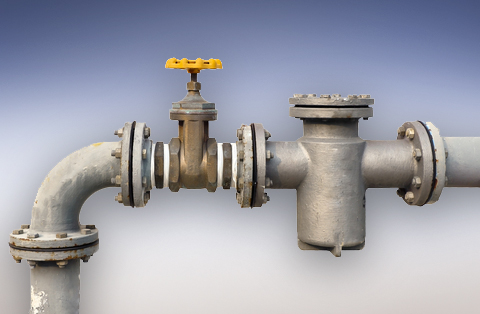Plumbing Dos and Don’ts
Last updated November 2024

Safety first.
Install smoke and carbon-monoxide detectors near your water heater and furnace.
Keep all flammable and combustible materials away from your water heater.
To reduce the risks of fire or health hazards, have a plumber or heating and air-conditioning company check your water heater’s venting for proper draft and to make sure the room is properly ventilated.
Make sure everyone in your household knows where water shutoff valves are and how to use them.
If you don’t know, ask a plumber to give you a tour; then label each valve with a description of its function and instructions for turning it off. If a pipe bursts, quickly stopping the flow of leaking water can prevent extensive damage. Once or twice a year, test the main water shutoff valve to make sure it is working properly.
Check for leaks.
Periodically inspect shutoff valves, exposed pipes, faucets, and your water heater. Regularly inspect ceilings and walls for signs of water damage. If you find a leak, have it repaired immediately.
Also, every few months, clear out all the clutter underneath your kitchen and bathroom sinks, turn on the taps and your garbage disposer, and look for leaks.
If you have a septic-tank system, have it inspected regularly by a licensed professional.
Can we caulk?
Periodically examine and re-caulk and re-grout bathtubs, showers, and sinks, as needed.
Dispose of grease or rendered-down fat in the trash.
Never pour it down a drain.
Cover bathtub and shower drains with screens to prevent hair from clogging pipes.
Chemical drain cleaners are extremely dangerous.
Pay close attention to package directions and warning labels. When pouring it into a drain, avert your face and wear eye protection.
If a drain is completely clogged, do not use a drain cleaner.
It will likely produce a large pool of highly caustic water. Also, using a drain cleaner on completely clogged drains may simply enlarge the blockage.
Dial down the heat.
Periodically check the temperature setting of your water heater—most models should be set between 120° and 140°. Running the burner at the lower end of that range saves energy and extends the life of the appliance. Follow manufacturer’s instructions on how to drain the sediment from the bottom of your model. If it seems too complicated, ask a plumber or HVAC repairperson to do it for you the next time one comes to your home to fix something else.
Toilet talk.
Slow toilet leaks silently waste gallons of water every day. To check yours, add a dozen drops of food coloring to the tank. Come back in an hour; if the color is gone or has made its way into the bowl, you have a leak. You might need to change a worn rubber flapper or diaphragm seal, or adjust the fill valve or ballcock (that big round thing attached to a rod). There are lots of videos online that explain how to do this.
To avoid clogs, don’t flush baby wipes, paper towels, feminine products, disposable diapers, cat litter, hair, or other items down the toilet.
Use care when operating your garbage disposer.
Make sure that its on-off switch is not located in an area where it can be accidentally turned on. If you have children, consider buying a batch-feed model that won’t operate without a stopper.
Heed warnings in your garbage disposer’s operating manual. Many models can become clogged if you try to dispose of coffee grounds, uncooked rice, etc. Always run a steady stream of water into it when in use.
Free floor drains.
Avoid expensive backups by pouring water into indoor drains to be sure they, well, drain. Make sure outdoor drains aren’t covered or clogged up with leaves and other debris.
Repel roots.
If you’ve had backups in your main sewer line due to tree roots invading the works, once or twice a year flush half a cup of copper sulfate crystals down a commode (don’t pour it down a sink or bath drain; that might corrode your indoor pipes).


